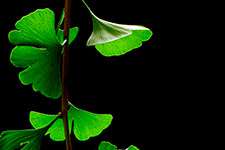Scientists race to save 'books' in the burning 'library of life'

As species blink into extinction all around the world, environmental scientists in Australia have come up with a way to decide 'which of the books we rescue from the blazing library of life'.
Researchers at the ARC Centre of Excellence for Environmental Decisions (CEED) have developed a cost-effective way to save a wide range of threatened species, including rare old ones that may be costly to protect.
Their new technique to help maximise both the species and genetic diversity we save helps resolve the dilemma facing conservation managers worldwide: whether to rescue a larger number of recent and more common species or fewer, unique and older species that may be more costly to preserve.
The technology will help nations such as Australia and New Zealand to protect as much diversity of both species and their genes as possible, says lead researcher Dr Joseph Bennett of CEED and The University of Queensland (UQ).
"The global extinction crisis is getting worse, and conservation funds are seldom enough to stop biodiversity from declining," says Dr Bennett. "This is like a library on fire – and we have to save as much of the precious information as we can.
"If we have to choose, do we carry out a few rare, old tomes, or do we carry a larger number of smaller books that may contain less information than the ancient tomes?"
Dr Bennett explains that highly distinct species have few close relatives, and their lineage has been isolated on the tree of life for many millions of years. The platypus is one example of Australia's 'rare old tomes' – its ancestors diverged from other mammals somewhere between 160 and 200 million years ago.
As the distinct species are isolated from others, they also contain unique genes, which may in the future prove very important to the health of ecosystems, or even the development of medicine. For example, Ginkgo biloba is an old and genetically distinct species that was once close to extinction, but is now used traditional medicine, he says.
"So losing the more distinct species – akin to losing the rare old tome – could mean the loss of this genetic information, along with millions of years of evolution," he says. "But when these species are expensive to protect, it may mean spending money to save one or two species instead of five or ten other species."
To solve this dilemma, CEED researchers developed a computer program that predicts how many species and how much genetic diversity can be saved with a given amount of money.
The program involves ranking each species based on different criteria, including how threatened it is, the cost to save it, and how genetically unique it is.
"We used the program in a case study with New Zealand's 700 most threatened species," says Dr Bennett. "In the study, we boosted the importance of saving rare species, so the more unique their genes, the higher they rank.
"Using this program, we found a balance that would save the greatest number of different species while conserving the maximum genetic diversity within a given budget."
The team found that the best solutions meant spending money on some less distinct species if a unique species were so expensive to save that they would have significantly reduced the total number of species – and genetic diversity – that could be conserved.
"But the good news is our best solutions were still able to reach 95 per cent of most species and 95 per cent of most genetic diversity we could get for any budget.
"This means that it may be possible to prioritise both genetic diversity and species diversity – these two aspects of biodiversity do not have to conflict. While we will have to choose among the species carefully, the rewards are well worth the effort."
"Research on species prioritisation enables governments, environmental organisations and conservation communities to devise strategies that will eventually raise enough funds to secure all of Australia's species," says CEED Director Professor Hugh Possingham.
The study "Balancing phylogenetic diversity and species numbers in conservation prioritization, using a case study of threatened species in New Zealand" by Joseph R. Bennett, Graeme Elliott, Belinda Mellish, Liana N. Joseph, Ayesha I.T. Tulloch, William J.M. Probert, Martina M.I. Di Fonzo, Joanne M. Monks, Hugh P. Possingham and Richard Maloney is published in Biological Conservation.
More information: Biological Conservation, www.sciencedirect.com/science/ … ii/S0006320714001219
Journal information: Biological Conservation
Provided by ARC CEED

















